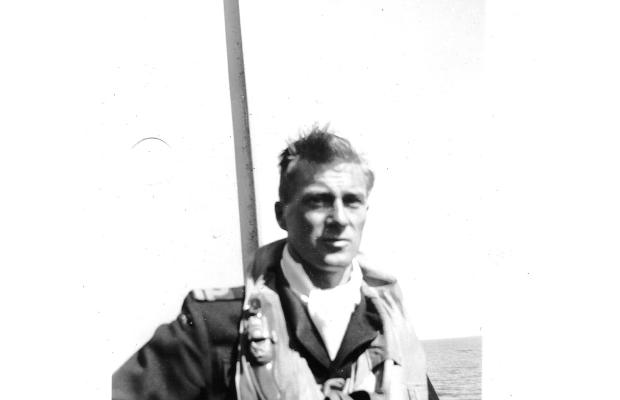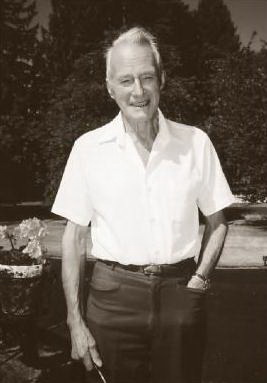
Dick Bartlett was a Canadian
who spotted a British newspaper advert in 1938 for FAA pilots.
He paid for his passage
to England by selling a number of fox fur pelts, and was successfully selected
for pilot training.
After two months initial
training aboard HMS Hermes and another month aboard HMS Corrageous, he
was sent to 20 ERFTS Gravesend for his pilot training,
then to Netheravon for advanced
training on Harvards. Operational training on the Swordfish then
followed, abaord HMS Argus in the Mediterranean which included six deck
landings.
Dick was then posted to Northern
Ireland to an air gunnery school flying Swordfishes. Shortly after
arriving, the Swordfishes were relaced by Skuas.
After a few hours on Skuas,
he attended a 10-day fighter/dive bomber course at HMS Raven (Eastleigh,
Southampton), flying Skuas and Gladiators.
He then started operational
flying, being posted to 803 Sqn, flying out in his Skua to the Ark Royal
from Hatston in the Orkney Islands.
Dick was shot down
over Norway in 1940. He was captured and remained a POW until the
end of the war.
He was active in escape
planning in various camps, including "The Great Escape" and escaped himself
a number of times.
Dick survived the epic long
march at the end of the war when the POWs walked over 500 miles across
Europe as the Russian army advanced
in one of the harshest winters
on record. After the war, Dick returned to Canada and transferred
to the RCN. Dick and his family lived in a number of locations
including Toronto, Halifax
and England until he retired from the Navy in 1964 to Victoria, BC.
Dick flew commercially for a few years
before returning to his
prairie roots by buying a farm in Montmartre, SK which he operated until
1976, commuting from the family home in Victoria.
He then operated a business
in Victoria for a few years until retiring in 1979.
Dick passed away peacefully in Victoria, BC on December 26th 2010.
In November this article appeared online and details more of Dick's wartime experiences.
Dick's logbook survives in
the Fleet Air Arm Museum in Yeovilton and shows that he flew N-5490 on
several occasions during his ab inito training
on No. 3 Air Course, 20
ERFTS, Gravesend in 1939.
